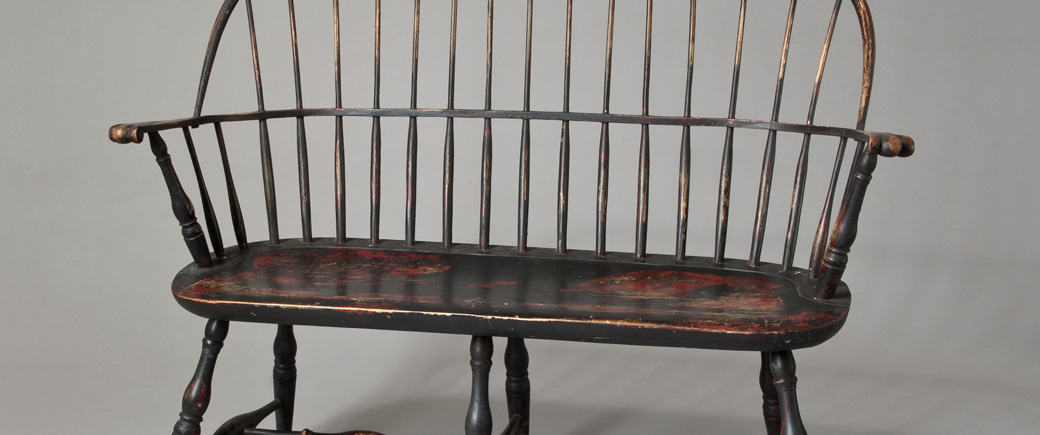David Douyard
Chairmaker
David Douyard stepped away from the corporate world and a satisfying job that took him “around the world on someone else’s dime” to assume his alter ego as a master chairmaker. Today he can be found quietly handcrafting traditional chairs, using time-honored skills, in an old barn on Wicket Street in New Hartford. It suits him to a ‘T’.
Douyard said he first became interested in woodworking when, as a child, he sat watching his hobbyist grandfather completing projects in his home woodworking shop. Douyard was intrigued but his education took a practical turn as he earned a degree in biochemistry and did a brief stint in a lab. He hated being cooped up and turned to furniture making for a while but, faced with college costs for his children, returned to a career in marketing and development of medical products.
“It was a lot of fun and very satisfying,” he said, “but I always assumed I would retire and have a woodworking shop.” He took early retirement and started building Windsor chairs professionally in 2001.
In The Windsor Style in America, author Charles Santore calls the Windsor form “the most characteristically American furniture style to emerge from the 18th Century.” He goes on to call Windsors “a democratic style that appealed to and was used by all levels of American society.” Among the chair’s illustrious fans: George Washington, who had several at Mount Vernon, Benjamin Franklin, and Thomas Jefferson, who is believed to have penned The Declaration of Independence while sitting in one.
Douyard reproduces these classic chairs at the same time that he creates his own interpretations of them and other traditional chairs. He makes them entirely by hand, one at a time, using hand tools and following traditional finishing techniques.
It all starts with the wood. Douyard purchases his stock locally and dries it himself. “I’m really lucky in the wood that is available,” he said. “New England has a plethora of wood.”
But the picture is changing. He loves working in cherry and walnut and terms ash “a beautiful wood,” but—alas—one that is disappearing because of the Emerald Ash Borer, an insect that has wiped out ash trees in Connecticut. “I haven’t seen a live one in a couple of years,” he reported. “Getting ash is already a problem.”
He uses hardwoods for legs and hickory or ash for the backs, but makes the seats from softer pine, shaping them with adze, scorp, compass plane and travisher. “The traditional Windsor chair was made that way, from several types of wood, and then painted,” he explained.
His chairs start with the highest quality straight-grained logs. He often works with green wood that he “rives,” splitting the wood in the direction of its long fibers. He then shapes each part with the grain to yield thin, strong and flexible parts. “It gives the wood a lot of flexibility and creates a chair that is really light but that maintains its tensile strength,” he said.
The joints of his chairs are also traditionally crafted, using moisture content and grain orientation to create long-lasting joints with bonds so tight the glue is virtually all scraped off when he inserts the legs into the seat bottoms.
Douyard passes on skills he learned from several fine furniture and master chair craftsmen through series of classes he holds every year, both at the beginning and advanced levels.
Douyard was named a Top Artisan in the Early American Life Directory of Artisans in 2017 (those selected for the directory are considered to be at the Master or Museum level). He was also the 2017 Editor’s Choice Winner for Popular Woodworking for his traditional sack back Windsor settee. The editor’s said they “could not resist its period perfection.” His furniture was exhibited at the San Diego Design Center in the early 1990s.
He puts his chairs in a number of select shows each year but says the majority of his business comes through word of mouth. To see his work and for more information, click on the link below and follow him at @ddouyardchairmaker on Instagram.

